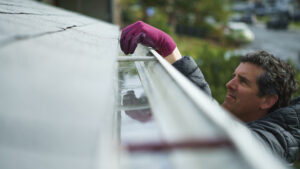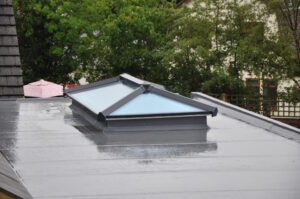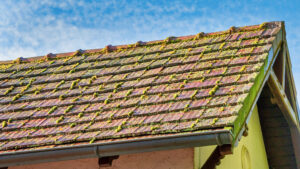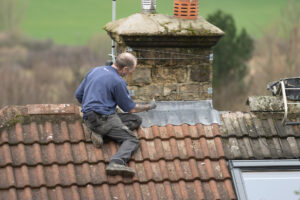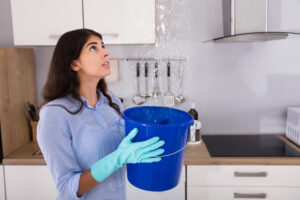Moss often grows in places where sunlight doesn’t reach and frequently inhabits areas of the roof that are shaded by trees or ones that face north. As moss grows, it can quickly stick to the roof’s surface, creep beneath, and lift roofing materials while also invading spaces between shingles and tiles. When the shingles are lifted, they tend to leave gaps, allowing rainwater and moisture to enter. This deteriorates the roof’s underlying structure, which is the beginning of rot. Moss not only detracts from the aesthetics of your roof but also jeopardizes its durability and structural integrity.
What Does Roof Moss or Algae Look Like?
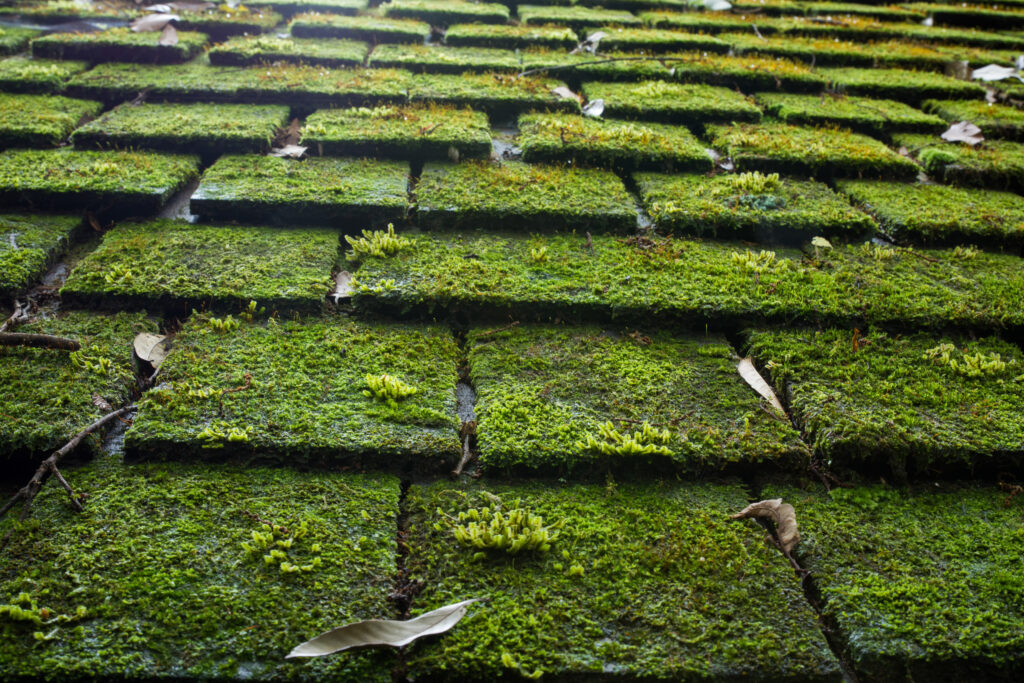
Algae
If you see any dark streaks on your roof, then these black streaks you notice are probably algae because moss grows vertically on surfaces, whereas algae stay low and flush to the surfaces on which they grow.
Most regions in the US, including Texas, are affected by algae stains on the roof. Algae are actually transported by the wind, birds, and rodents.
Typically, the life cycle of this algae starts with airborne spores that land on your roof, particularly on roofs with asphalt shingles. Because that portion of the roof receives the least UV exposure and dries last after morning dew and rain, the northern exposure of roofs provides the greatest potential for algae to survive and develop. As the algae grows and spreads, it looks like black streaks on your shingles.
When algae are left on a roof for too long, it develops into mould. Algae thrive in humid environments because they require constant moisture to survive. The long-term algae growth can cause the roof to become moist, which frequently encourages the growth and spread of mould.
Moss
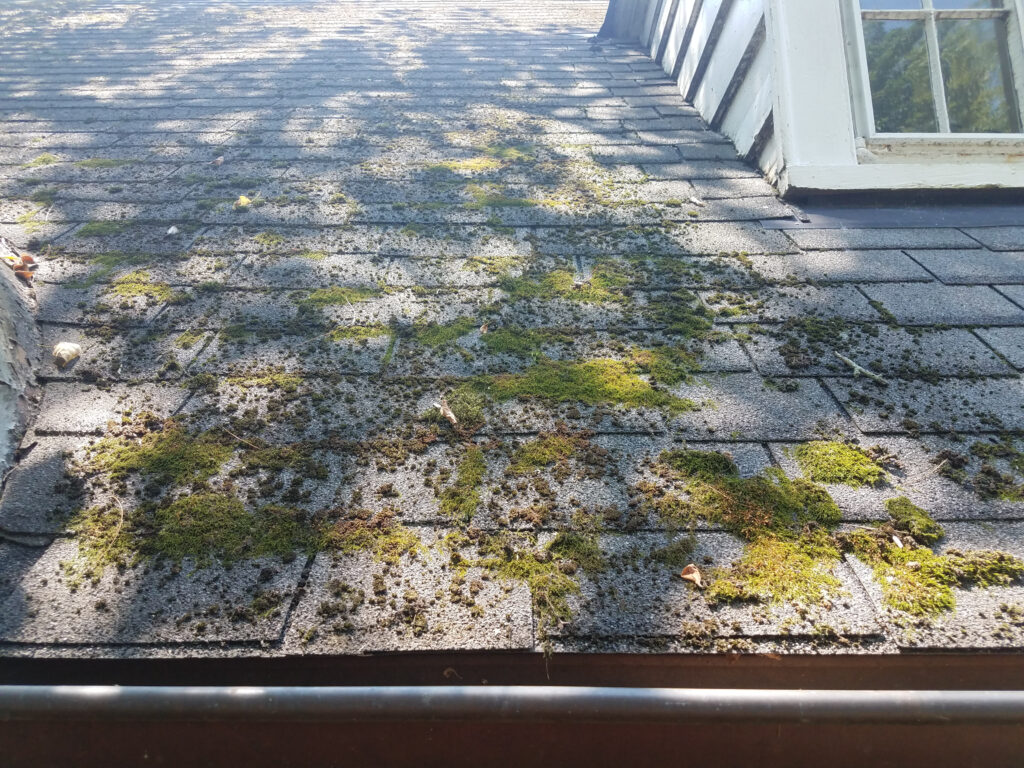
Moisture, shade, dampness, permeable roofing materials, a build-up of organic debris, moisture, and a lack of maintenance all contribute to the growth of moss on the roof. Moss spores can take hold and establish themselves in places with insufficient sunlight and moisture, which may eventually damage roofing materials. Moss growth on a roof frequently takes the form of green fuzzy type growth, detracting from the aesthetics of the roof and possibly jeopardizing its structural stability.
Similar to how algae get onto your roof – moss spores can become airborne and travel to rooftops through the wind, birds, squirrels, and other tiny creatures.
Moss spores that land on a roof will eventually collect in the gaps between the shingles and develop into thick, spongy moss.
How to Clean Algae, Moss and/or Mould from the Roof?
Roof is not a safe place to perform detailed working to get rid of moss and algae. This job needs to be performed by a professional roofer like us. WABO Roofing works with a team of professional roofers who have been trained to perform all jobs related to the roof, including getting rid of moss, mould, and algae. We have cleaning agents and techniques that remove these damaging elements from your roof in no time. It is also recommended that you get your roof maintained regularly so they do not grow on your roof.
Some Tips to Prevent Roof Moss and Algae
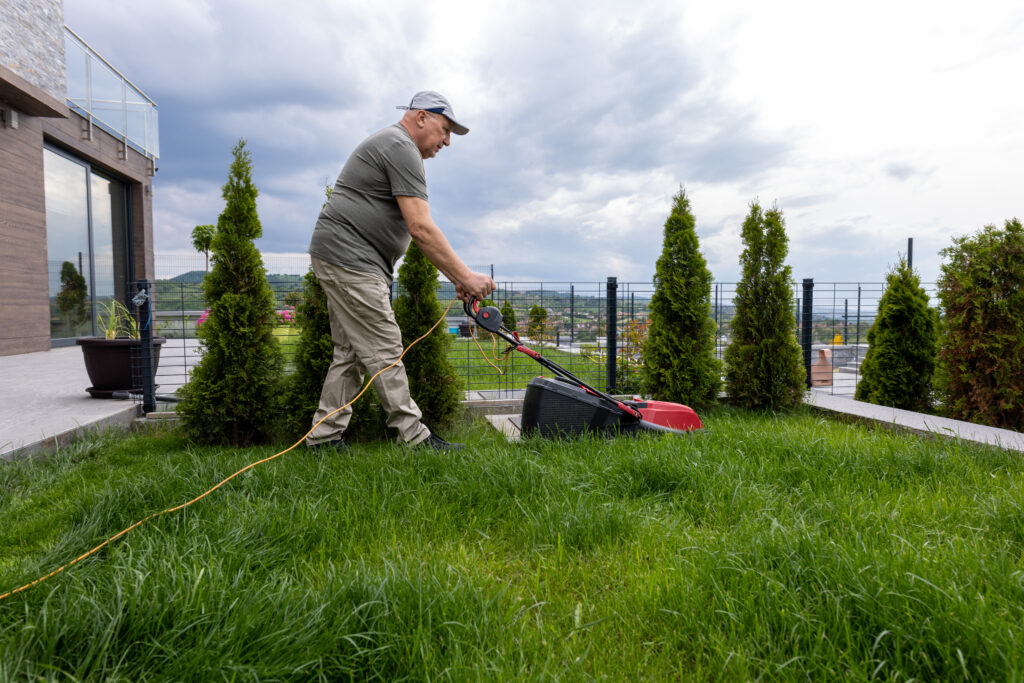
Roof moss and algae typically spread due to bacterial growth and wetness. Your roof will last longer if you can prevent that growth from occurring on your roof. Following the removal of moss and algae, there are a few techniques to stop further growth:
Do Not Let Water Stand on the Roof – One of the factors that can encourage the formation of mould and algae on your roof is standing water. Fixing shingles, cleaning gutters, and maintaining and repairing the roof as needed will reduce standing water on the roof.
Trim Any Trees Near Your Home – Algae growth is frequently spread because of overgrown trees that transmit microorganisms onto the roof. Plant any trees far enough from the house and prune them regularly to prevent them from hanging over the roof.
WABO Roofing’s Approach to Cleaning Algae and Moss
Here is a step-by-step guide to our approach:
Inspection and Assessment
The condition of the roof must be carefully inspected as the first important step. Our team will determine the level of moss and algae growth, spot any broken roofing components, and gauge the general condition of the roof. This evaluation aids in choosing the best cleaning procedure and any repairs that are required.
Safety Precautions
We always put safety first before beginning the cleaning process. We employ safety gear like ropes and harnesses to avoid mishaps while working on high roof slopes. Using tarps and fastening drains, we shield the nearby plants and surfaces from potential run-off.
Cleaning Solutions
We utilize special cleaning agents designed specifically for the type of growth on the roof. These treatments are safe for the environment and efficient at removing moss and algae. Additionally, they prevent regrowth, keeping the roof clean for a longer period.
Soft Washing
Our team uses a method known as soft washing as opposed to high-pressure washing, which can harm roofing components. This technique uses low-pressure spraying of the cleaning solution to remove algae and moss gently without damaging the roof’s surface.
Scrubbing and Brushing
We may also use low-pressure scrubbers or soft brushes to ensure complete removal when there is heavy growth of algae and moss. This stage is crucial for obstinate or deeply rooted growth.
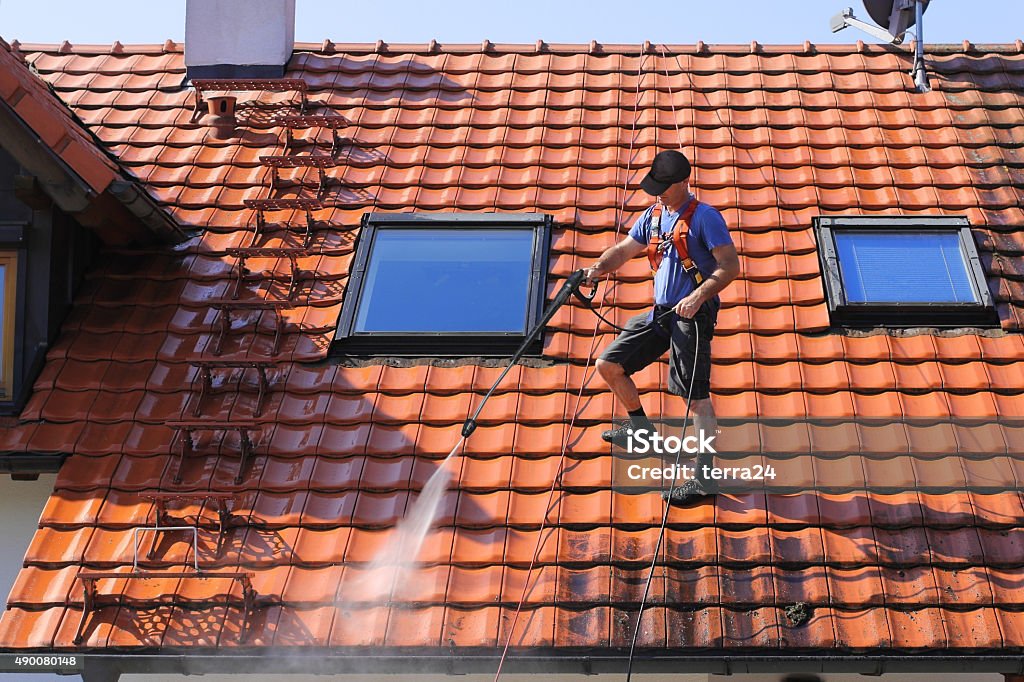
Rinse and Preventative Treatment
The WABO Roofing team rinses the roof thoroughly after cleaning it to remove any cleaning solution and residue. We also apply a prophylactic treatment to stop further development and keep the roof clear of moss for an extended period of time.
Repairs and Maintenance
In order to ensure the integrity of the roof, our team will execute the necessary repairs if they discover any damaged roofing materials during their inspection. This can fix any underlying problems or change any broken shingles and tiles.
Post-Cleaning Inspection
Once the cleaning and/or maintenance is complete, our team performs a final inspection of the roof to ensure that the issues are fixed and the roof is completely free of moss and algae.

